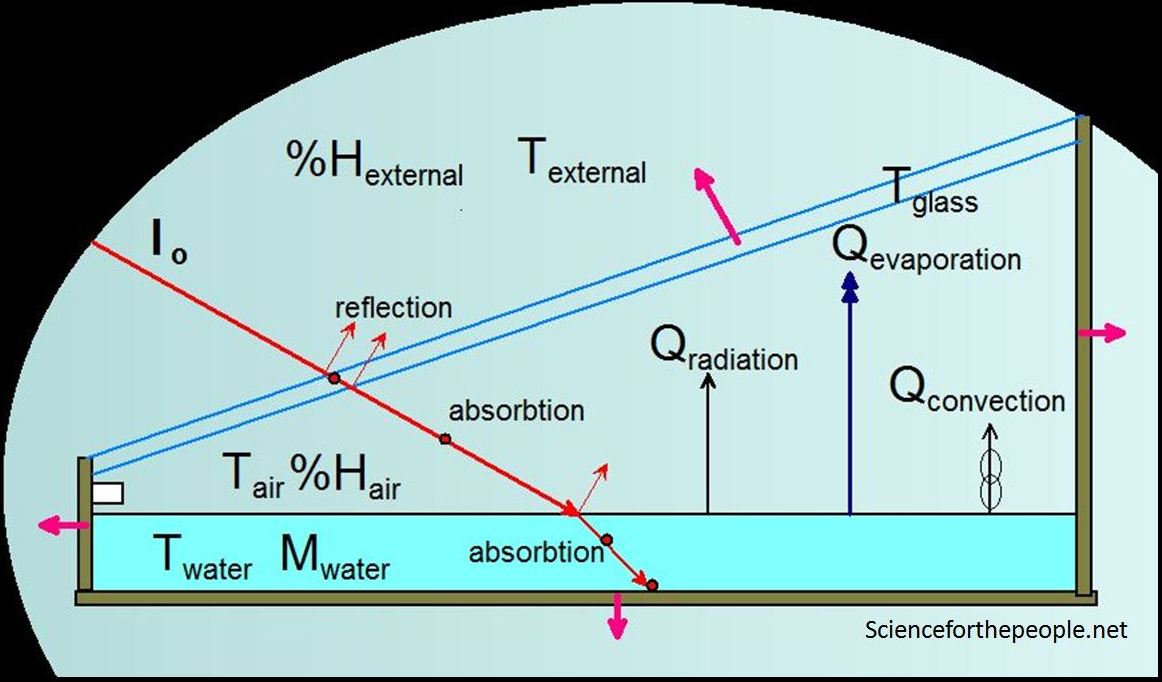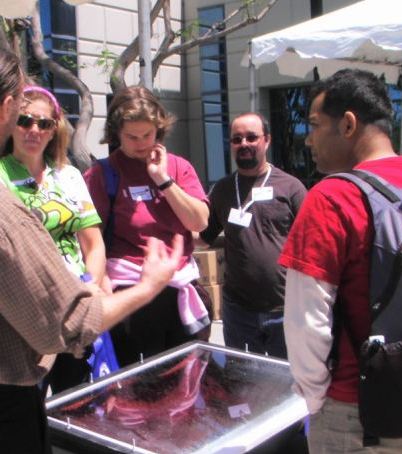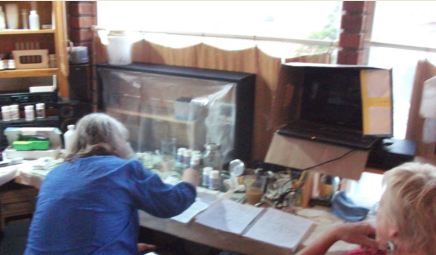
|
Science Pedagogy
The state of the biosphere demands that science and science education focus on the interface between societal demands and ecological constraints when possible.
Physics education research indicates that passive solar distillers and heaters are useful ways to engage traditional academic students with physics and engineering concepts. 1 More generally, an academic science curriculum based on studying and meeting human and environmental needs with sustainable appropriate solutions can provide students with a first rate science education, facilitate the development of contextualized problem solving skills, and be supportive of sustainable global health. Many students have an innate interest in practical problems, and sustainable technologies ranging from solar distillation and sand filtration to alternative energy and environmental surveys are accessible, interesting and intrinsically interdisciplinary science instruction tools.

|
Hands On
Interactive hands on learning, problem driven inquiry and cooperative problem solving are not only implicit in capacity building approaches but are also fundamental to many modern efforts to reform science pedagogy. 2, 3, 4, 5 Transcending the conceptual boundaries between community and classroom, capacity building and pedagogical reform can be seen to form a continuum.
Problem Driven
Both national and international science education bodies have called for a greater classroom exploration of the connections between science and society. 2, 4, 5 Shifting the organization of student entry into a scientific domain from traditional abstract concept-based sequences to more integrative approaches motivated by real world scenarios will also buttress calls by the UN and others for greater technological diffusion and focus on global health problems. 2, 4, 6

|
Interdisciplinary
These pedagogical reform efforts are complimented by the larger scientific community's movement towards more interdisciplinary, integrated, and sustainable scientific practice. 6 , 7 , 8 In support of this position, the World Bank finds that, "If the development of alternative technologies were to be adopted as a priority than traditional science education and training would be substantially reoriented. This might include a stress on the social context of application, the utilization of old as well as new technologies to suit needs, and more emphasis on sustainable lifestyles sympathetic to the environment". 6 , 8
1. Using solar devices to teach science Headley, O. et al, 1993. Physics Education. Vol 28, pp 60-65. 1993. doi: 10.1088/0031-9120/28/1/011
2. Priority Area Assessment on Capacity Building in Science: Strengthening international science for the benefit of society. International Council for Science.
3. Essential Components of Problem-Based Learning for the K-12 Inquiry Science Instruction. Hsing Chi, A.W.; Thompson, P.; and Shuler, C.F. 1998. CCMB, School of Dentistry University of Southern California
4. NSTA Position Statement: Science/Technology/Society: A New Effort for Providing Appropriate Science for All. National Science Teachers Association.
5. Re-invisoning the Ph.D.: Recommendations from National Studies on Doctoral Education. Jody Nyquist and Donald H. Wulff. University of Washington Reinvisioning Project, 2000.
6. Our Common Journey: A Transition Toward Sustainability. Board on Sustainable Development- Policy Division National Research Council. NATIONAL ACADEMY PRESS, Washington, D.C. 1999
7. The National Academies Sustainability Roundtable 2005.
8. Harnessing science, technology and innovation for sustainable development. ICSU-ISTS-TWAS Consortium ad hoc Advisory Group. France. 2005 ISBN:0-939357-63-9